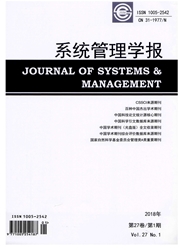

 中文摘要:
中文摘要:
在具有水平差异的双寡头结构中考虑技术拥有企业作为市场先行者内生决定降低成本技术的程度,借助Stackelberg竞争模型,分析技术的最优转让方式以及技术授权与企业兼并之间的关系。研究表明:企业兼并对技术拥有企业有利,且可以提升社会福利;特许权收费和双重收费方式的技术授权不会发生,应该允许企业兼并。当企业兼并不可行时,是否采用特许权和双重收费方式进行授权,则取决于产品的替代程度;当固定收费方式可行时,应禁止企业兼并;当固定收费优于其他授权方式,但在产品替代程度很强时,固定收费方式可能会降低授权企业利润,需要考虑相应的政策支持以实现企业目标与社会目标的一致。
 英文摘要:
英文摘要:
We consider a technology owner as a market leader who decides on the size of the cost-reduction innovation endogenously in a differentiated duopoly. Using Stackelberg model, we focus on the best way to transfer the cost-reduction technology and its relationship between licensing and merging. The study shows that the merging is preferred to licensing and it increases the social welfare simultaneously. Royalty and two-part tariff would not be adopted if the merging is allowed. However, when merging is not allowed, whether royalty and two-part tariff are applicable depends on differentiation of the goods. If fixed-fee is allowed, merging should be prohibited. On one hand, the fixed-fee is superior to merging and the licensing approach; on the other hand, licensing is inferior when the goods are close to perfect substitution, and the antitrust is supposed to provide policy support to balance the goal of the firms and society.
 同期刊论文项目
同期刊论文项目
 同项目期刊论文
同项目期刊论文
 期刊信息
期刊信息
